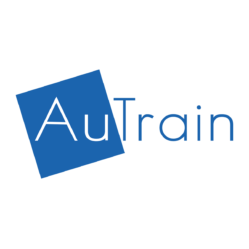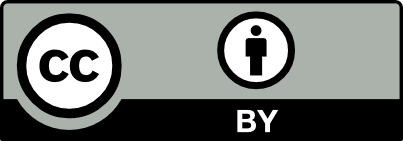08:30 – 10:00
Aim, Contents, Learning outcomes Organization
Activity & Materials: Worksheet 2.1, 2.2; Publication 2.1; Video/internet 2.1, 2.2, 2.3, 2.4, 2.5
#1. Welcome participants, introduce the aim, contents and the learning outcomes of this module (allow 5-10 min. for this)
Note: Present slides number 1, 2, 3, 4, and 5
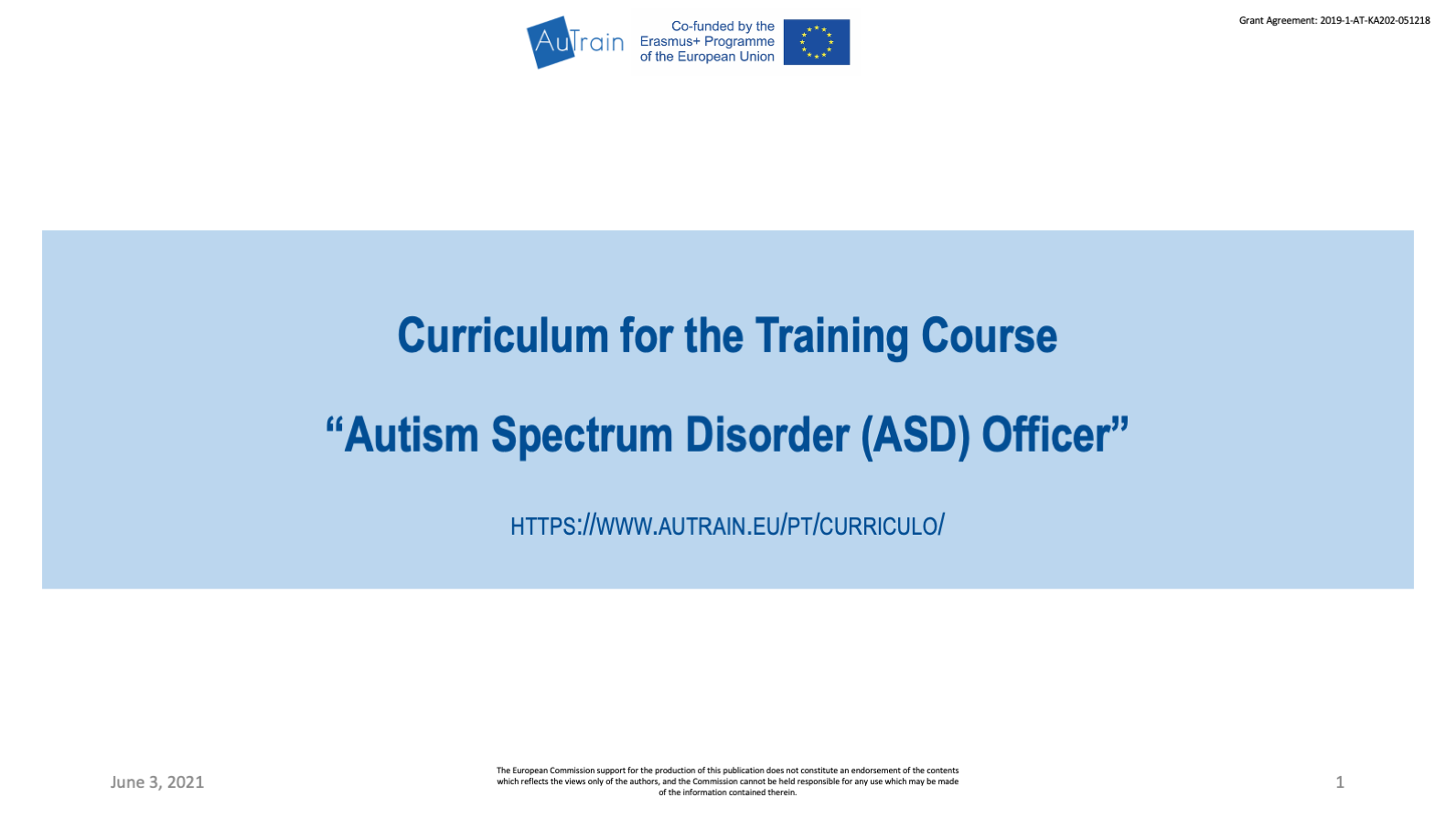
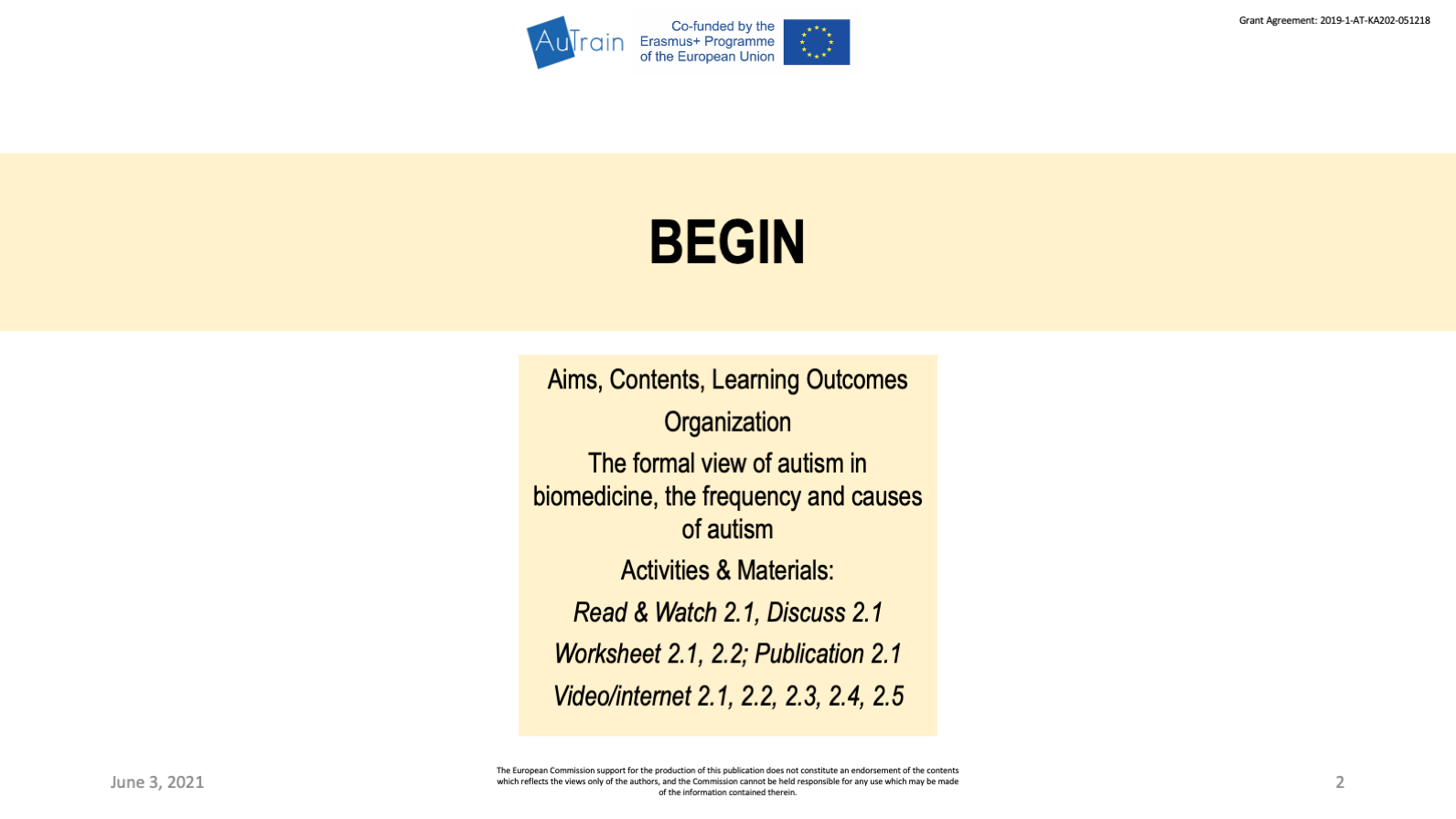
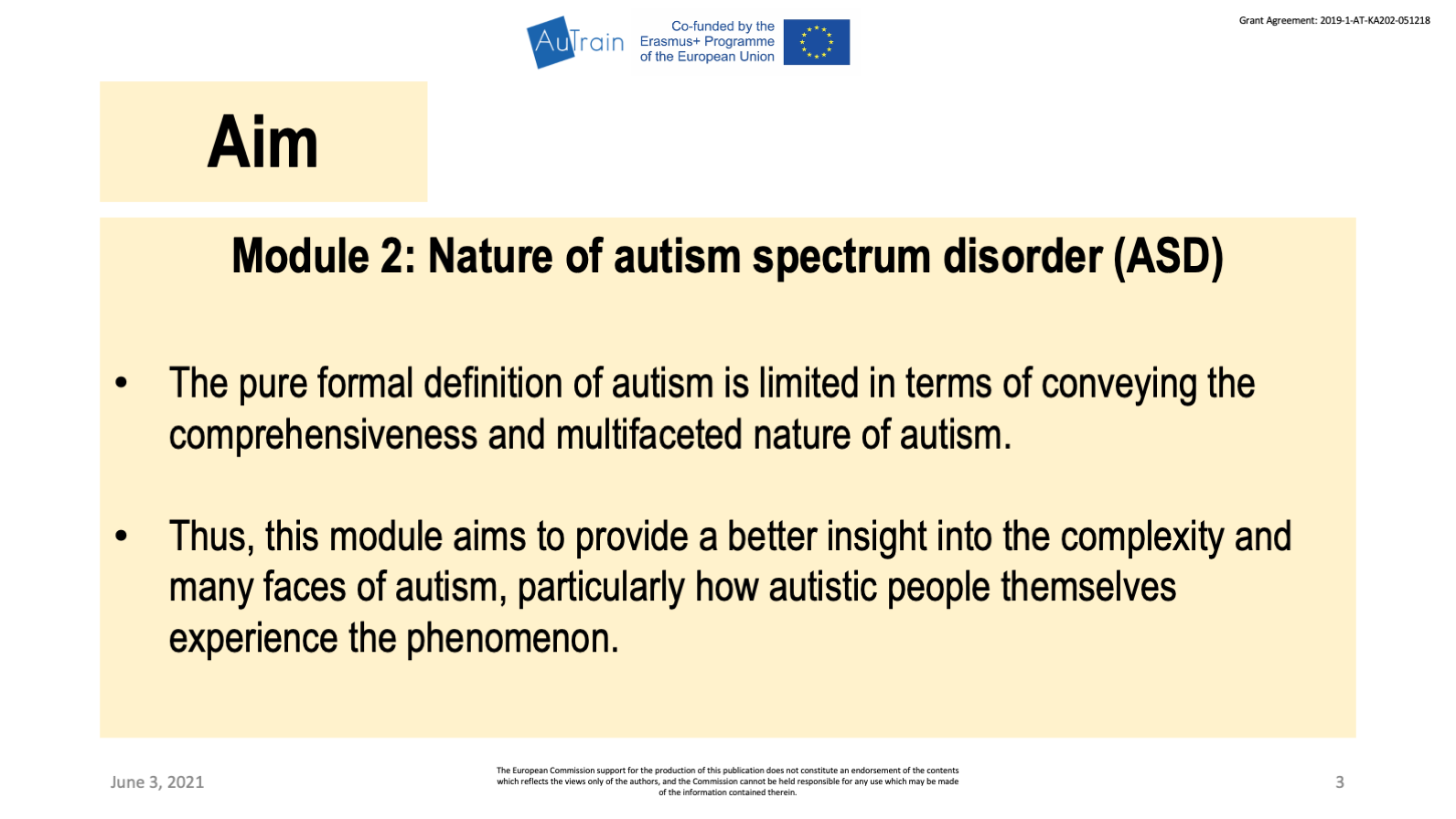
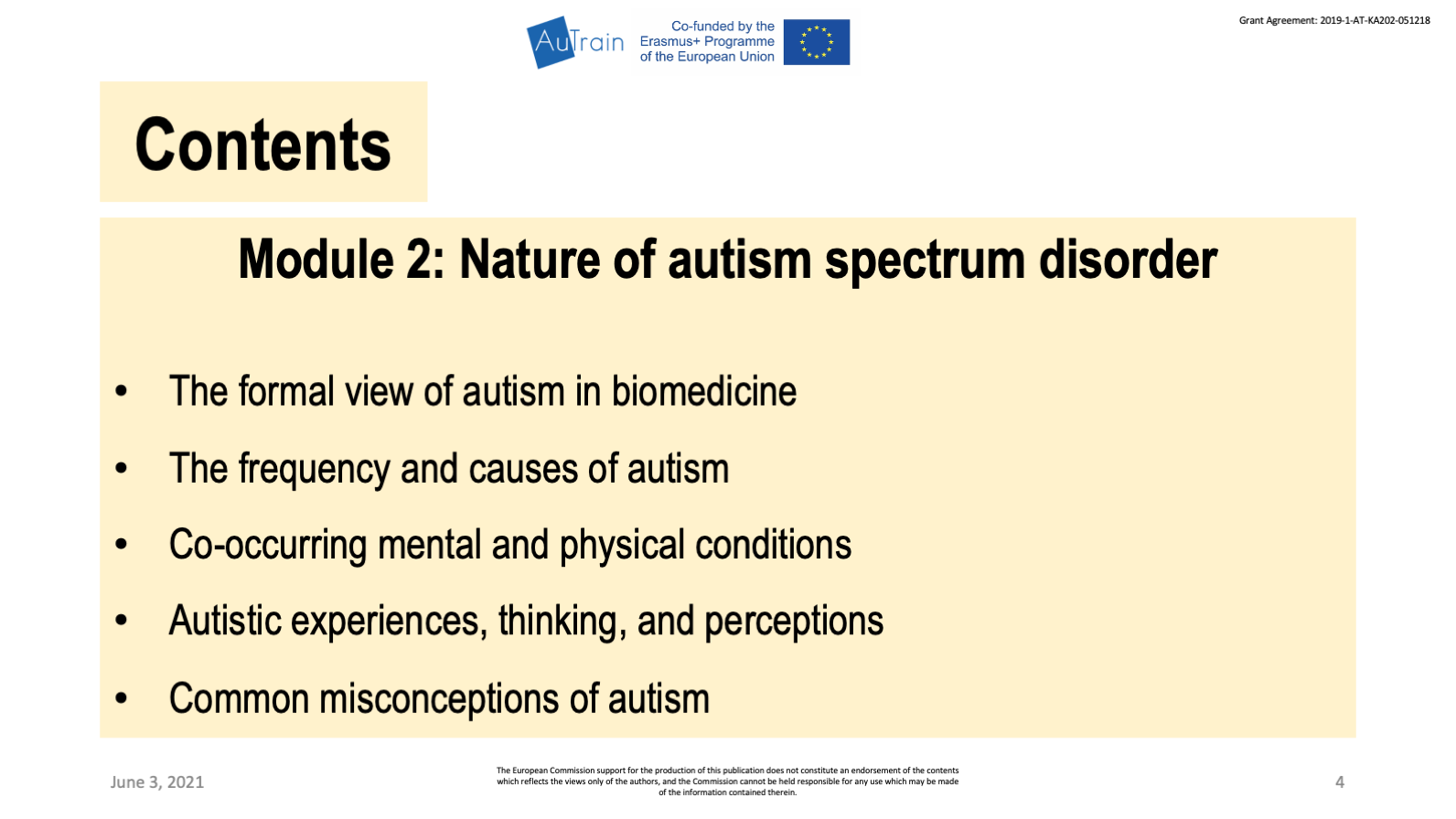
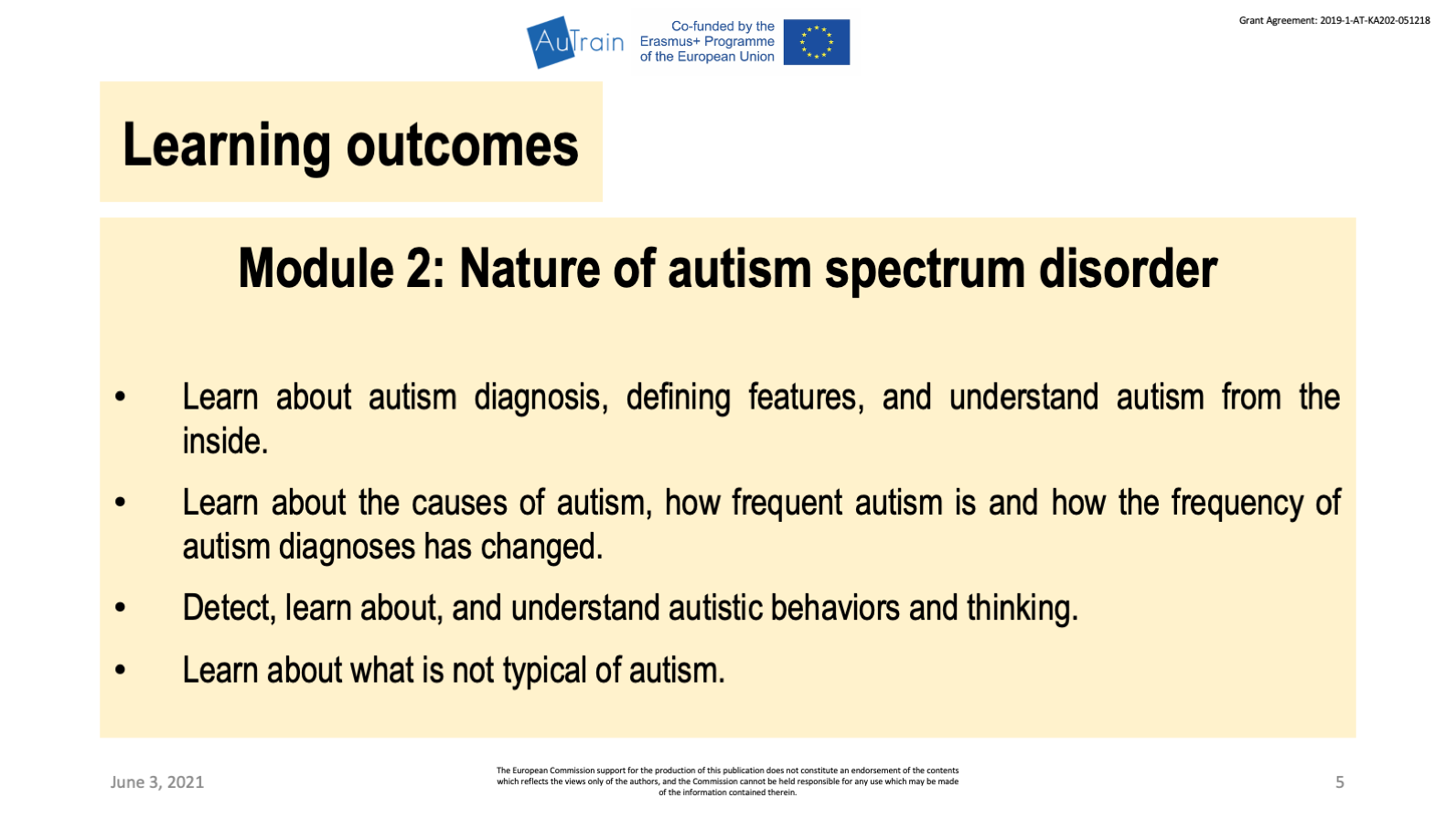
Aim
The pure formal definition of autism is limited in terms of conveying the comprehensiveness and multifaceted nature of autism. Thus, this module aims to provide a better insight into the complexity and many faces of autism, particularly how autistic people themselves experience the phenomenon.
Contents
- The formal view of autism in biomedicine
- The frequency and causes of autism
- Co-occurring mental and physical conditions
- Autistic experiences, thinking, and perceptions
- Common misconceptions of autism
Learning Outcomes
Learn about autism diagnosis, defining features, and understand autism from the inside. Learn about how frequent autism is and how the frequency of autism diagnoses has changedDetect, learn about, and understand autistic behaviors and thinking.Learn about autism diagnosis, defining features and understand autism from the inside.Learn about what is not typical of autism.
#2. Present to the participants the program for the day including the planned breaks. The program is quite dense (allow 5 min. for this)
Note: Present slides number 6 and 7
Organization
Present the overview schedule of the session and suggest a longer 30 minutes break and another 15 minutes break.
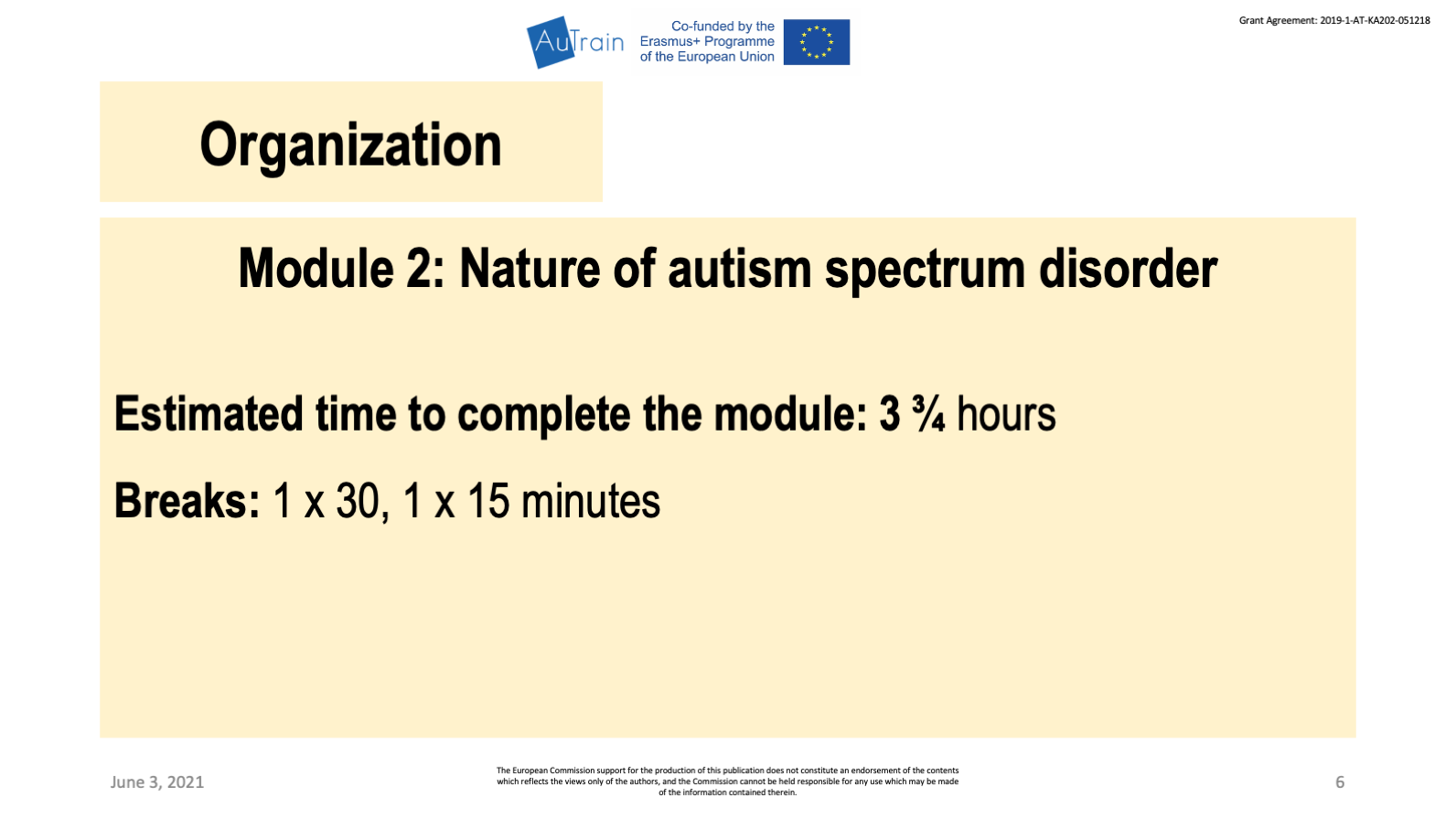
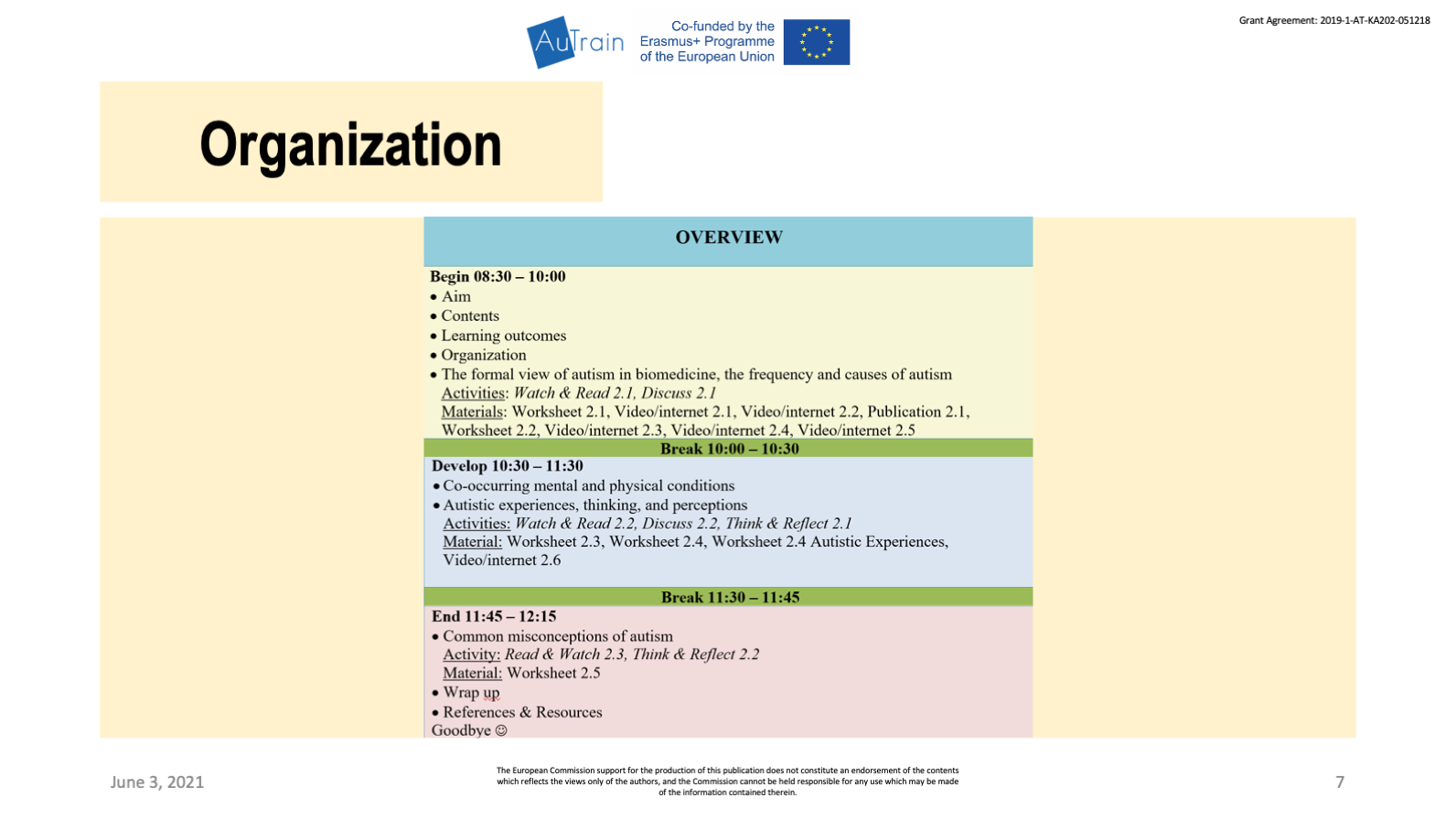
#3. Introduce and develop the Activity Read & Watch 1.1
Note: Present slides number 8 to 11, provide worksheets and publication to participants

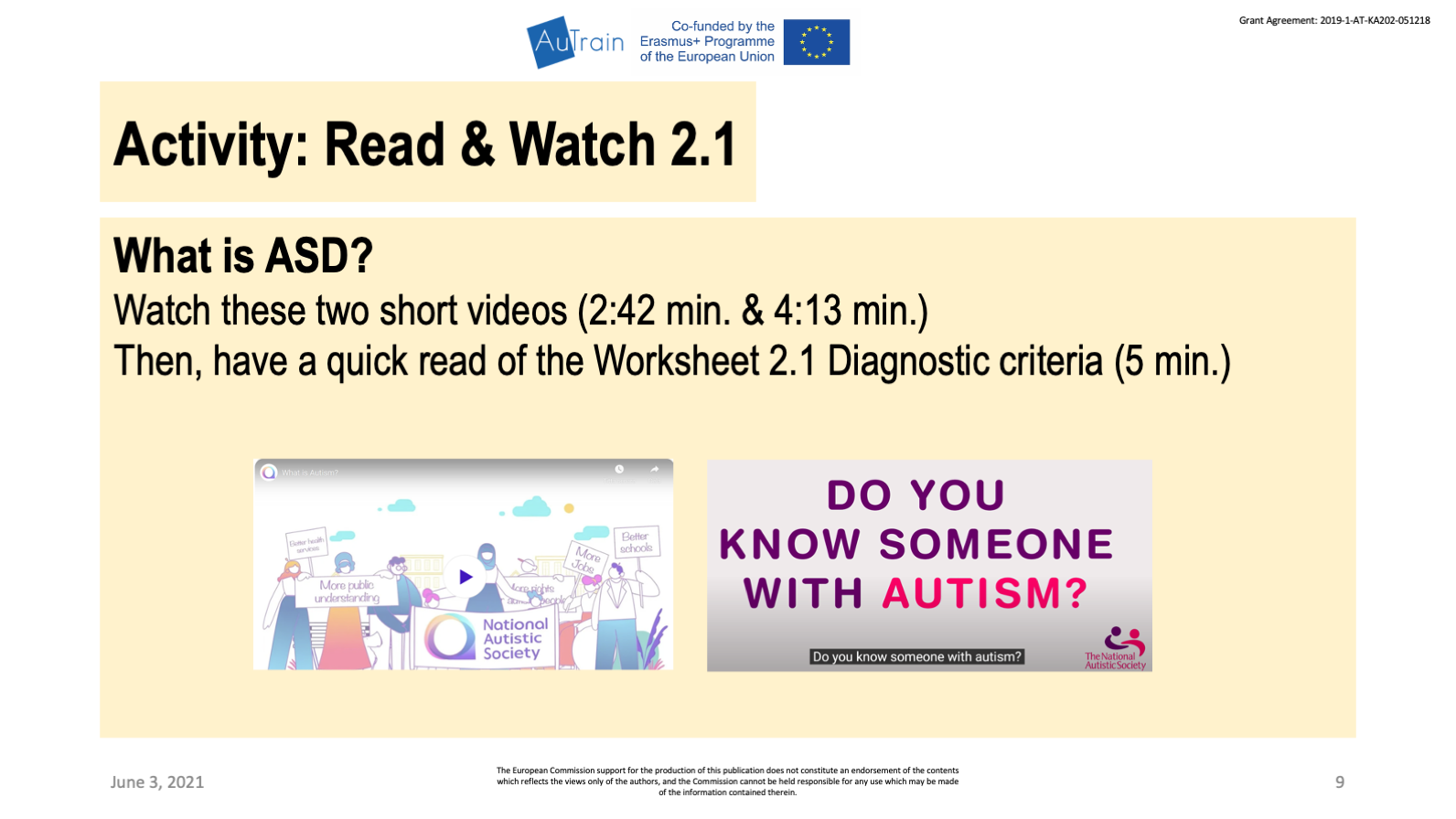
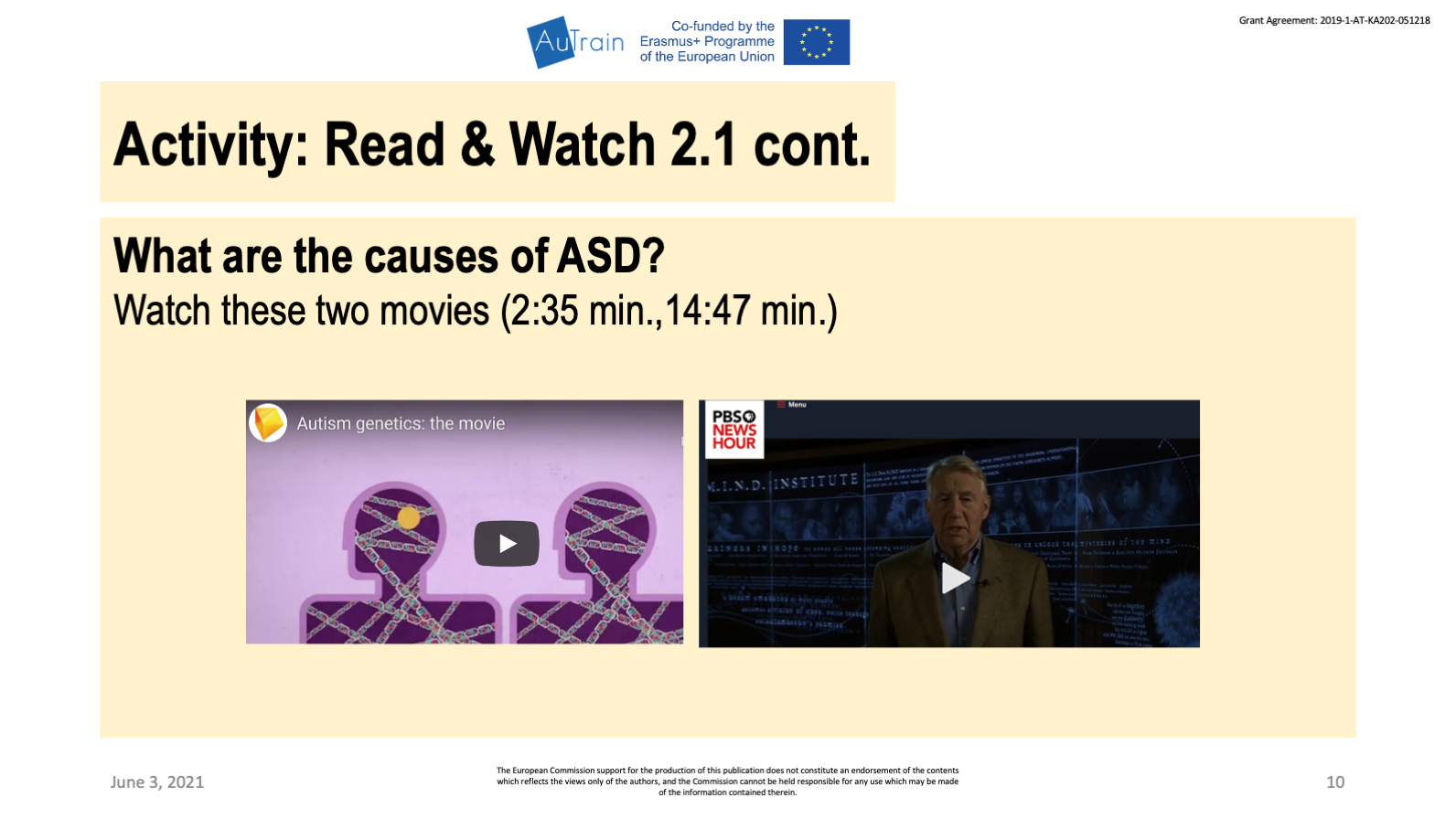
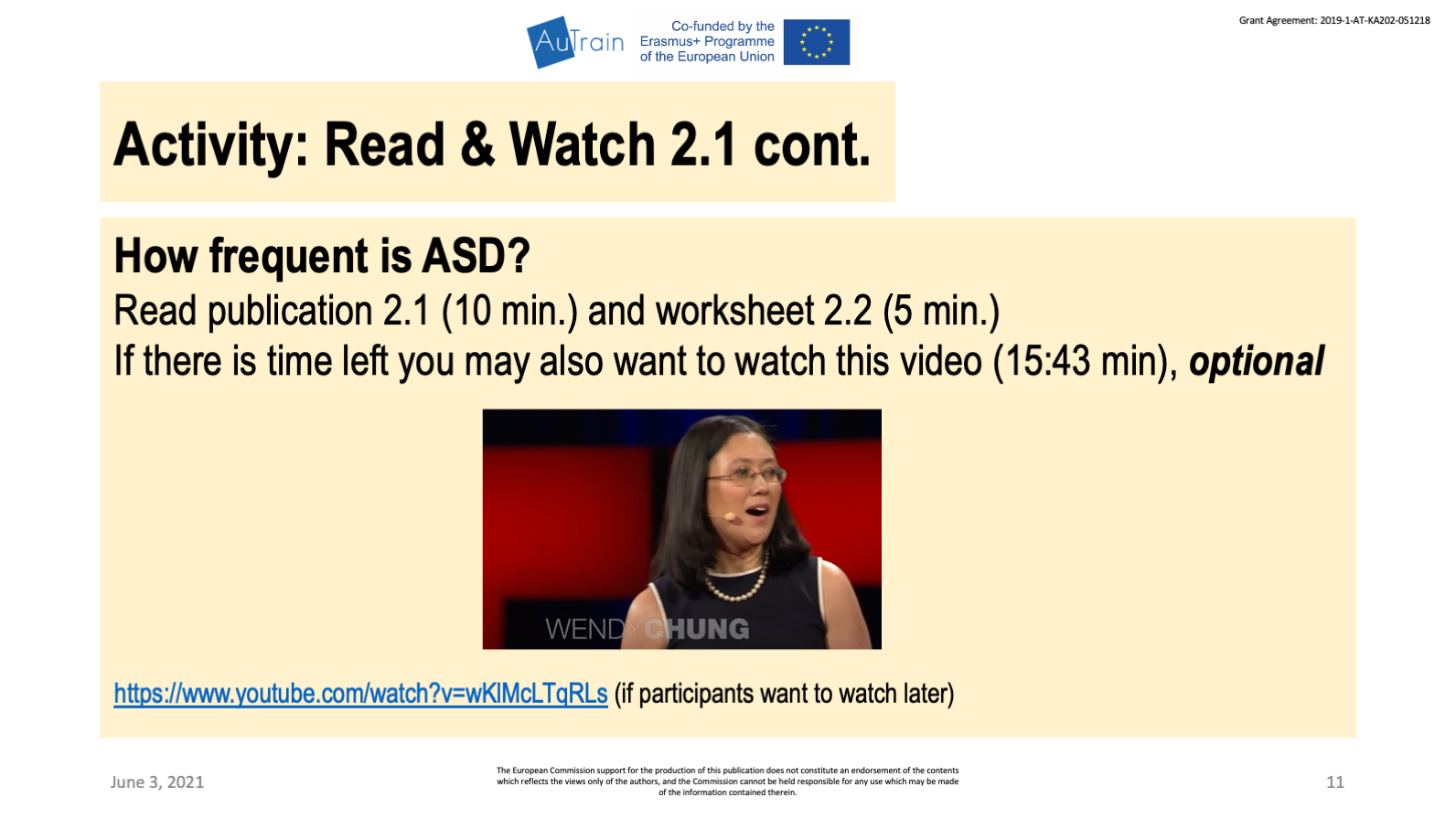
Introduce the Aim of the activity
This activity aims to give an introduction to autism, its causes and frequency. The activity is divided into three parts, one slide each in the presentation (9, 10, 11). Introduce the activity with the overview slide 8. This activity is a mixture of reading shorter texts and watching mostly shorter movies. Participants will need to take notes for later discussion (next activity) of important points or thoughts. All images in the slides indicative of the video are linked to the actual videos.
Introduce the material: Provide the Worksheet 2.1 Diagnostic criteria, Publication 2.1 Fombonne 2021_JADD, and Worksheet 2.2 Increasing prevalence reasons to the participants, and tell them, when they will need to read them in a certain order, and that you will guide them, when to read which of them.
Procedures
After the introduction (slide 8), show slide 9 “What is ASD”, tell that you are going to show the two videos first (videos 2.1 & 2.2) and then the participants have 5 min. to look at the worksheet diagnostic criteria of ASD, according to DSM-5.
Then move to slide 10, “What are the causes of ASD”. Show both movies (2.3 & 2.4) to the participants and remind of making notes if needed.
Move to slide 11. Ask the participants to read Publication 2.1 Fombonne 2021_JADD, and Worksheet 2.2 Increasing prevalence reasons. Allow max 15 min. for this. If people think this is too short, they can focus on the abstract and discussion in the publication. Remind of making notes. Video 2.5 is optional, there is probably not time for it. The default is to not show it.
Move to the next activity.
#4. Introduce and develop the Activity Discuss 2.1
Note: Present slide number 12
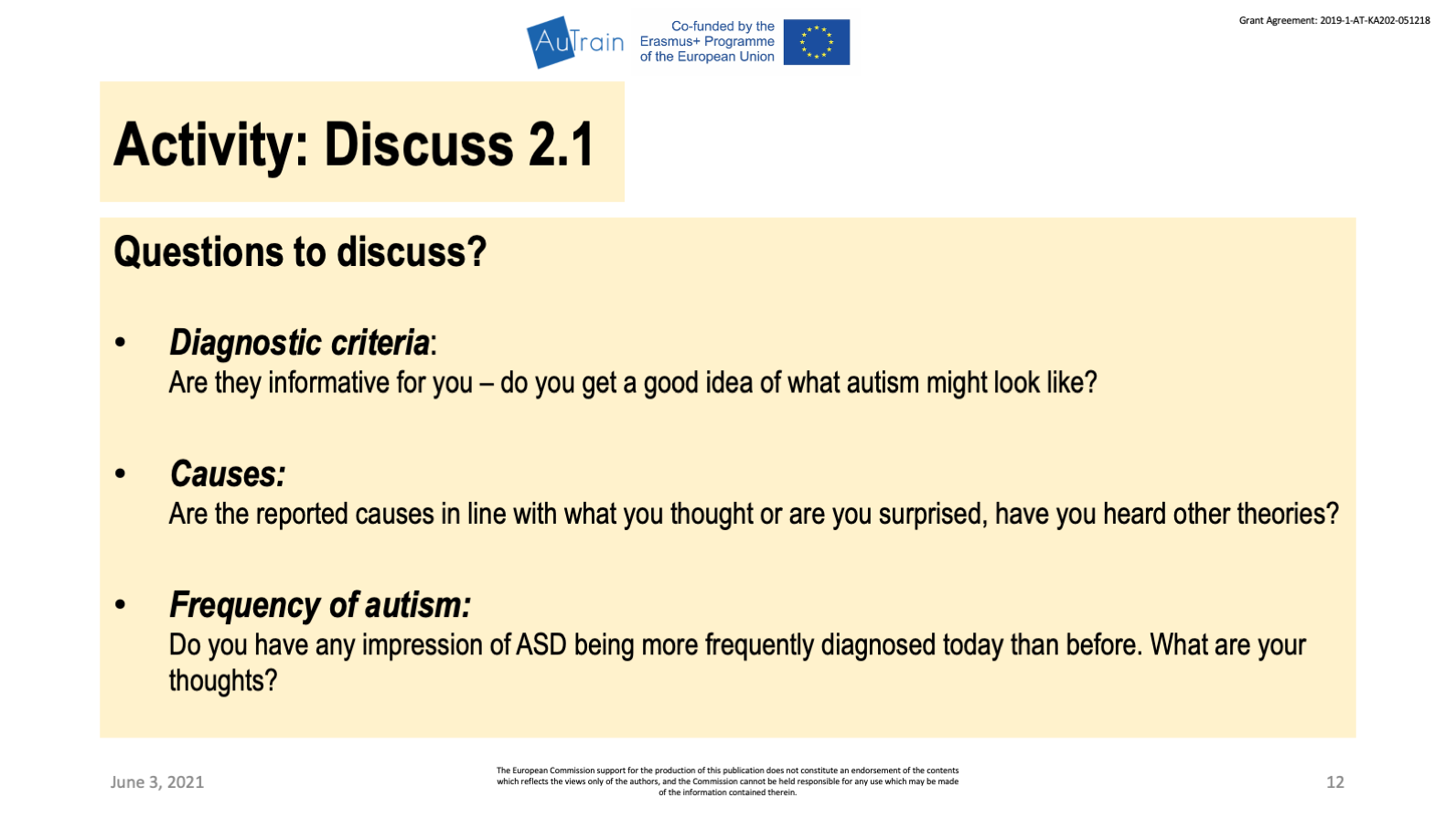
Introduce the Aim of the activity
The objective of this activity is that the participants think about what they have read and watched and share and discuss their impressions and personal experiences of the contents with the rest of the participants. The participants can use their notes or introduce more spontaneous ideas or respond to what others say. The main idea is to connect the contents provided with the individual experiences and concepts of the participants. Is there something that surprises them? To they get an idea of ASD if they did not know about it so much before? What are their personal experiences with ASD from work and elsewhere?
Introduce the material: The discussion is based and the material provided in the activity before. Just remind of it and show slide 12 during the whole activity.
Procedures
Show the slide with the questions to the participants and give them a moment to read them. Then ask if someone would like to make a start to any of the questions. If there is no reaction, explain again what the activity wants to achieve. If there is still not reaction, start by answering the questions yourself, and then pass the word to anyone among the participants to start a discussion. Try to get a discussion going, rather than only people one after the other answering the questions. You might want to introduce provocative questions (e.g. “Anyone believing that autism is a fashion diagnosis”?, “Do you think there is an inflation of ASD diagnoses”). 25 min. for this activity. You may want to use the whiteboard or the blackboard to write-down bullet points of what is said.
Then say: “Now you deserve a break of 30 min.” (show slide 13)
